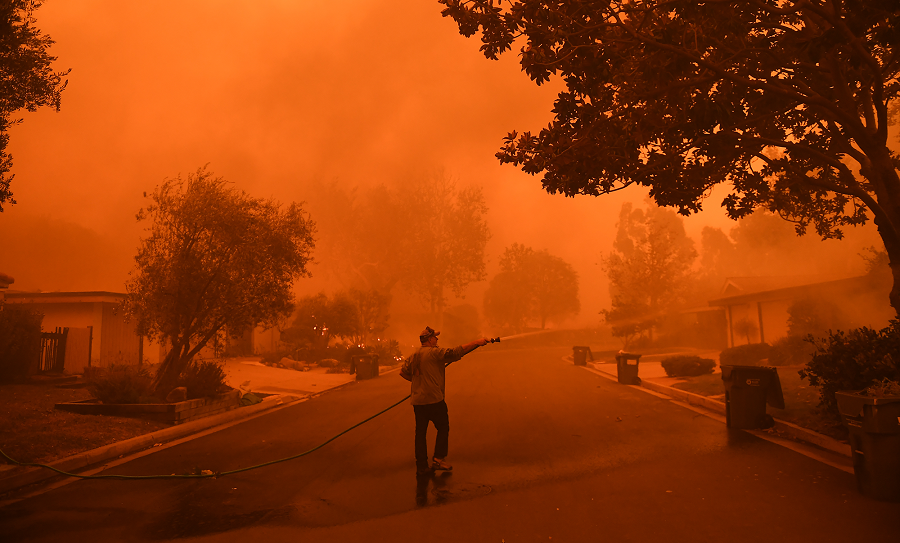In Short : Climate scientists are sounding a dire alarm as Earth enters uncharted territory in the realm of climate change. The planet is experiencing unprecedented levels of global warming, leading to more frequent and intense heatwaves, wildfires, floods, and extreme weather events. These scientists warn that we are facing a critical tipping point, emphasizing the urgent need for aggressive climate action. They stress the importance of reducing greenhouse gas emissions, transitioning to renewable energy sources, and implementing adaptation measures to mitigate the worst impacts of the climate crisis. The situation calls for immediate and comprehensive global efforts to combat climate change and protect the planet’s future.
In Detail : PORTLAND, Ore. : International scientists reissued a global warning about climate change Tuesday with a new study highlighting how several climate-related records have been shattered since 2021, particularly those involving ocean temperatures, sea ice and Canada’s wildfire season just this year.
The new study in BioScience comes from an international team of scientists led by Oregon State University professor of ecology William Ripple and former Oregon State postdoctoral researcher Christopher Wolf — the same two researchers that conducted an analysis in 2020 listing 35 vital signs to track climate change.
In that study, researchers declared a climate emergency that has since garnered signatures from over 15,000 scientists in 111 countries. For their newest article, however, the authors compare how Earth’s vital signs have fared since 2021, finding that 20 of these indicators are now at record extremes and that little progress has been made to combat climate change.
“Without actions that address the root problem of humanity taking more from the Earth than it can safely give, we’re on our way to the potential collapse of natural and socioeconomic systems and a world with unbearable heat and shortages of food and fresh water,” Wolf said in a statement.
The study’s goal, Ripple said, is to communicate climate facts and make policy recommendations.
“It is a moral duty of scientists and our institutions to alert humanity of any potential existential threat and to show leadership in taking action,” Ripple said.
A planet “under siege”
The data released Tuesday indicates that several climate-related records reached new heights in 2023, especially those driven by increasing greenhouse gases like carbon dioxide, methane and nitrous oxide.
“The global average carbon dioxide concentration is now approximately 420 parts per million, which is far above the proposed planetary boundary of 350 parts per million,” the authors write.
One considerable contributor to rising emissions includes fossil fuel subsidies, the researchers point out, explaining that government actions to favor fossil fuels roughly doubled between 2021 and 2022 — from $531 billion to over $1 trillion — allowing carbon emissions to climb while maintaining fossil fuels like coal a dominant energy source over renewable energy.
“A major driver of economic and energy trends is Russia’s ongoing invasion of Ukraine, which has accelerated the transition to renewables in Europe, but which may also cause some countries to switch from Russian-supplied gas to coal,” the authors write, adding that the conflict has contributed to a 107% increase in fossil fuel subsidies from $531 billion in 2021 to over $1 trillion in 2022 from rising energy prices.
Another contributor to increasing carbon dioxide levels are forest fires and the global decline in tree cover, the latter of which dropped 9.7% between 2021 and 2022. This comes as the global area of wildfires decreased by 28%, and Brazilian Amazon forest loss rates fell 11.3% — a feat offset by the 6.3% increase in U.S. wildfires and the one gigaton of carbon dioxide released by Canadian wildfires this year.
“How quickly such emissions can be reabsorbed by postfire recovery is uncertain, and there is a real risk that increasing fire severity will cause unrecoverable carbon loss in a warming future,” the researchers write.
In 2023 so far, the researchers report that there have been 38 days with global averages above pre-industrial levels. This means that Earth is seeing some of the highest surface temperatures in the last 100,000 years, they say, which has contributed to record low ocean acidity and reductions in glacier thickness and Greenland ice mass.

